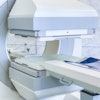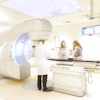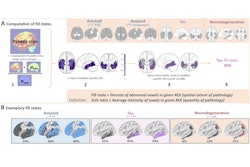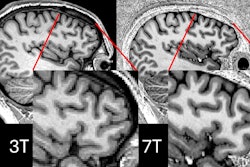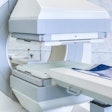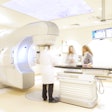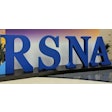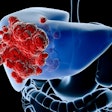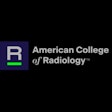As plans for the U.S. National Institutes of Health (NIH) evolve under the Trump administration, there is no certainty regarding the NIH budget for the next fiscal year and much remains speculative, according to radiologists and others from the medical imaging research community who visited Capitol Hill this week.
Culminating this year's March 25 Hill Day and #MedTech25 events, the Academy for Radiology and Biomedical Imaging Research, RSNA members, and early-career investigators brought their work and needs into the spotlight for members of Congress in hopes of staving off budget cuts.
"We emphasized the profound impact of research and innovation -- not only on patient care but on society as a whole," Amir Imanzadeh, MD, a diagnostic radiologist at the University of California, Irvine, told AuntMinnie.com in an email. "Many of today’s widely used imaging modalities and treatments, such as photon-counting CT, PSMA PET/CT, and 3-tesla MRI, are the direct result of past NIH-funded research."
 Amir Imanzadeh, MD.
Amir Imanzadeh, MD.
"To support ongoing research efforts, we proposed funding projections for the next fiscal year: $51.3 billion for NIH, $474 million for the [National Institute of Biomedical Imaging and Bioengineering] NIBIB, and $4 billion for the [Advanced Research Projects Agency for Health] ARPA-H," Imanzadeh added. "We presented these figures to congressional and Senate members, advocating for their support."
However, recent policy changes have significantly impacted many institutions at various levels, from hiring freezes to delays in issuing awards, and halting the review of submitted grants, Imanzadeh added.
"At this time, there is no certainty regarding the NIH budget for the next fiscal year, and much remains speculative," he said.
Mitchell Schnall, MD, PhD, senior vice president for data and technology solutions and a professor of radiology at the University of Pennsylvania, told AuntMinnie there was good discussion related to federal imaging research funding. Among the points that were made, "federal funding is critical for basic funding that supports new technology development," he said, and "this typically has a longer timeline than industry typically invests in." Moreover, "it is also important for high-risk projects."
Schnall added, "There were concerns expressed about the future of NIH funding given some of the recent executive orders related to indirect funding. It was commented that we need to listen to concerns and work with policymakers to try to find a path forward."
In a March 25 update, the NIH said grants and funding policies and processes are evolving as the NIH aligns with new agency priorities. Posting of new funding opportunities and policy guidance is currently on hold. Some funding opportunities have been closed, and others have been updated.
The NIH updated other terms March 24, saying that institutes and centers planned to continue issuing awards for competing, noncompeting continuation, and administrative supplements using previously approved negotiated indirect cost rates, except for awards under which facilities and administrative (F&A) costs are reimbursed at a fixed rate, per policy statement 7.4.
Alzheimer's disease research
NIH appropriations have also risen and fallen in previous years, of course. For example, programs receiving funding from the 21st Century Cures Act, such as the Brain Research Through Advancing Innovative Neurotechnologies (BRAIN) Initiative, experienced large budget cuts in 2024 while programs related to Alzheimer’s disease and related dementias had their budgets increase.
However, some Alzheimer's disease research centers have had funding interrupted recently, a point that was emphasized during a Senate forum March 26.
"Our field has made game-changing advances," said Sterling Johnson, PhD, a clinical neuropsychology specialist at the University of Wisconsin-Madison, whose training included a functional neuroimaging fellowship at Dartmouth-Hitchcock Medical Center in New Hampshire. Johnson is also associate director and Biomarker Core leader in the Wisconsin Alzheimer’s Disease Research Center.
The center, which has not been affected by recent funding disruptions, is part of a nationwide network that functions as a consortium and provides data to the world, as well as local infrastructure to scientists, Johnson explained. The University of Wisconsin participates in the Alzheimer's Disease Neuroimaging Initiative (ADNI), a public-private partnership that aims to validate biomarkers for Alzheimer's disease clinical trials in a multicenter, observational study. Data from the project is available for researchers all over the world to use -- importantly, with NIH involvement and oversight, according to Johnson.
The ADNI "... repository is under review for potential modification in compliance with Administration directives," according to a message on the ADNI website.
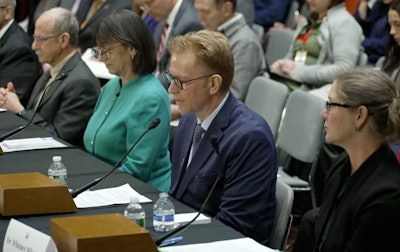 Sterling Johnson, PhD, an Alzheimer's disease researcher at the University of Wisconsin-Madison, addressed NIH funding uncertainties during a Senate forum March 26.Liz Carey via YouTube
Sterling Johnson, PhD, an Alzheimer's disease researcher at the University of Wisconsin-Madison, addressed NIH funding uncertainties during a Senate forum March 26.Liz Carey via YouTube
For the Senate forum Wednesday, Johnson noted that a key to progress with Alzheimer's disease research is NIH's willingness to fund longitudinal studies.
"Alzheimer's begins years, if not decades, before the signs of memory loss," he said. "That insight has now been the basis for launching major NIH-funded prevention trials."

